Phylum Arthropoda (Arthropods) ➔ Subphylum Hexapoda (Hexapods) ➔ Class Insecta (Insects) ➔ Order Neuroptera (Net-winged insects) ➔ Family Chrysopidae (Green lacewings)
Chrysopidia (Chrysotropia) ciliata (Wesmael, 1841)
Bewimperte Florfliege
Aeolops albus (Linnaeus, 1758) | Chrysocerca ciliata (Wesmael, 1841) | Chrysocerca japonica Nakahara, 1915 | Chrysocerca kusnerovi Navás, 1911 | Chrysocerca kusnezovi Navás, 1912 | Chrysocerca lacroixi (Navás, 1911) | Chrysocerca (Chrysotropia) ciliata (Wesmael, 1841) | Chrysopa alba (Linnaeus, 1758) | Chrysopa alba flaviceps Navás, 1932 | Chrysopa ciliata Wesmael, 1841 | Chrysopa japonica (Nakahara, 1915) | Chrysopa linensis Navás, 1916 | Chrysopa (Chrysopa) alba (Linnaeus, 1758) | Chrysopa (Chrysopa) ciliata Wesmael, 1841 | Chrysopa (Chrysotropia) ciliata Wesmael, 1841 | Chrysopa (Purae) alba (Linnaeus, 1758) | Chrysopidia alba (Linnaeus, 1758) | Chrysopidia ciliata (Wesmael, 1841) | Chrysotropia alba (Linnaeus, 1758) | Chrysotropia ciliata (Wesmael, 1841) | Chrysotropia japonica (Nakahara, 1915) | Chrysotropia kusnezovi (Navás, 1912) | Chrysotropia lacroixi Navás, 1911 | Chrysotropia linensis (Navás, 1916) | Chrysotropia melaneura Navás, 1916 | Chrysotropia melaneura absona Navás, 1916 | Chrysotropia melaneura furcata Navás, 1916 | Hemerobius albus Linnaeus, 1758 ? | Hemerobius perla albus Linnaeus, 1758 |
(?: ambiguous synonym)
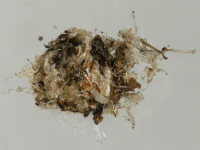
Chrysopidia ciliata (Wesmael, 1841) Bewimperte Florfliege
Chrysopidia ciliata, cocoon, det. Arp Kruithof
DE, Chemnitz, Harthwald; 2012-08-01 10:54:33
Image number: 5620
cocoon
DE, Chemnitz, Harthwald
2012-08-01 10:54:33
det. Arp Kruithof
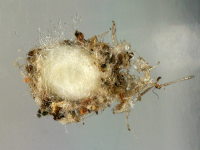
Chrysopidia ciliata (Wesmael, 1841) Bewimperte Florfliege
Chrysopidia ciliata, bottom view
DE, Chemnitz, Harthwald; 2012-08-01 10:54:03
Image number: 5619
bottom view
DE, Chemnitz, Harthwald
2012-08-01 10:54:03

Chrysopidia ciliata (Wesmael, 1841) Bewimperte Florfliege
Chrysopidia ciliata, freshly hatched
DE, Chemnitz, Harthwald; 2012-08-17 09:29:17
Image number: 5621
freshly hatched
DE, Chemnitz, Harthwald
2012-08-17 09:29:17
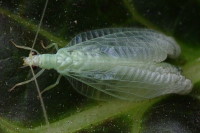
Chrysopidia ciliata (Wesmael, 1841) Bewimperte Florfliege
Chrysopidia ciliata, freshly hatched, det. Arp Kruithof
DE, Chemnitz, Harthwald; 2012-08-17 09:31:18
Image number: 5622
freshly hatched
DE, Chemnitz, Harthwald
2012-08-17 09:31:18
det. Arp Kruithof
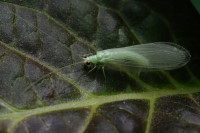
Chrysopidia ciliata (Wesmael, 1841) Bewimperte Florfliege
Chrysopidia ciliata, still uncolored, det. Arp Kruithof
DE, Chemnitz, Harthwald; 2012-08-17 09:59:33
Image number: 5623
still uncolored
DE, Chemnitz, Harthwald
2012-08-17 09:59:33
det. Arp Kruithof
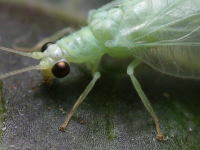
Chrysopidia ciliata (Wesmael, 1841) Bewimperte Florfliege
Chrysopidia ciliata, still uncolored, det. Arp Kruithof
DE, Chemnitz, Harthwald; 2012-08-17 10:00:33
Image number: 5624
still uncolored
DE, Chemnitz, Harthwald
2012-08-17 10:00:33
det. Arp Kruithof

Chrysopidia ciliata (Wesmael, 1841) Bewimperte Florfliege
cf. Chrysopidia ciliata, larva
DE, Chemnitz, Stadtpark; 2012-09-20 14:32:29
Image number: 5735
larva
DE, Chemnitz, Stadtpark
2012-09-20 14:32:29
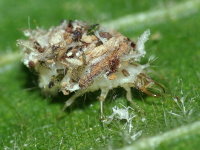
Chrysopidia ciliata (Wesmael, 1841) Bewimperte Florfliege
Chrysopidia ciliata, larva
DE, Chemnitz, Harthwald; 2016-08-30 17:14:19
Image number: 7456
larva
DE, Chemnitz, Harthwald
2016-08-30 17:14:19
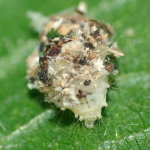
Chrysopidia ciliata (Wesmael, 1841) Bewimperte Florfliege
Chrysopidia ciliata, larva
DE, Chemnitz, Harthwald; 2016-08-30 17:12:19
Image number: 7457
larva
DE, Chemnitz, Harthwald
2016-08-30 17:12:19
Classification:
Chrysopidia ciliata belongs to the subfamily Chrysopinae, tribe Chrysopini.
Distribution:
Western and Central Europe, Fennoscandia, parts of the Middle East, Central and East Asia.
Habitat:
Deciduous trees, hedges, gardens, orchards.
Description:
Smaller species; body predominantly green or light yellowish; wings at front edge with long protruding hairs; forewing length in females 16 - 17 mm, in males 14 - 15 mm; head immaculate; frons and clypeus yellowish green.
Biology:
The imagines of
Chrysopidia ciliata fly from late April to early September. They are mostly found in June and July. The arboreal species is attracted to light.
The females of the European Chrysopidae species lay stalked eggs. The green eggs of
Chrysopidia ciliata are laid individually or in very small groups of up to 6 eggs either on the underside of leaves and twigs or at their tips.
The larvae live on deciduous trees and bushes. To camouflage the larvae carry a protective cover on their dorsal surface made of vegetable matter, skin remains of their prey and general debris.
The larvae feed on aphids. Known preys are the Woolly Beech Scale
Cryptococcus fagisuga (Eriococcidae) and
Pseudococcus species (Pseudococcidae).
Note:
The first two pictures show a top and bottom view of the cocoon in which the larva of the freshly hatched lacewing shown here has pupated.
The pupal period lasted between 17 and 21 days.
References, further reading, links:
- Oswald J.D. (2019). LDL Neuropterida Species of the World (version Jul 2018). In: Species 2000 & ITIS Catalogue of Life, 2019 Annual Checklist (Roskov Y., Ower G., Orrell T., Nicolson D., Bailly N., Kirk P.M., Bourgoin T., DeWalt R.E., Decock W., Nieukerken E. van, Zarucchi J., Penev L., eds.). Digital resource at www.catalogueoflife.org/annual-checklist/2019. Species 2000: Naturalis, Leiden, the Netherlands. ISSN 2405-884X.
- L. M. Diaz-Aranda & Y. J. Monserat: Aphidophagous Predator Diagnosis: Key to Genera of European Chrysopid Larvae
(Neur. : Chrysopidae), Entomophaga 40 (2). 1995. 169-181.
- http://www.h.chiba-u.jp/lab/insect/neuro/neuroptera/chrysopidae/comparison-E.html








